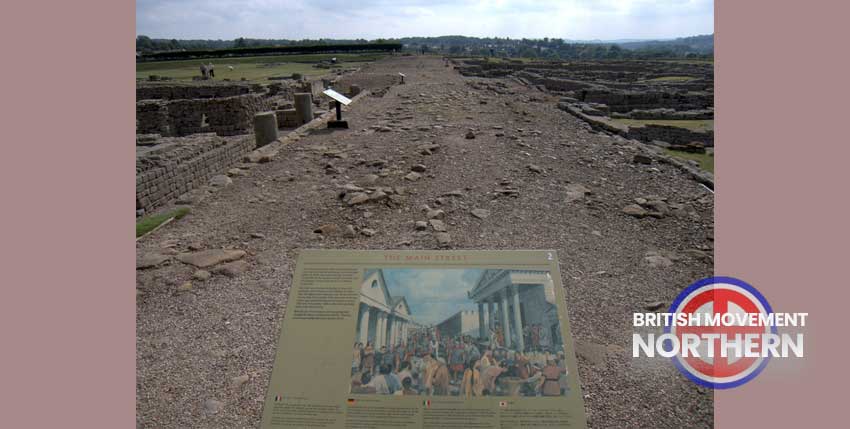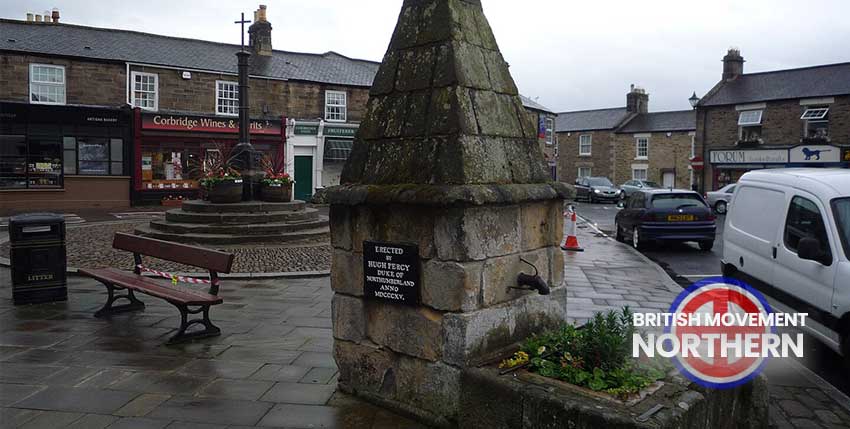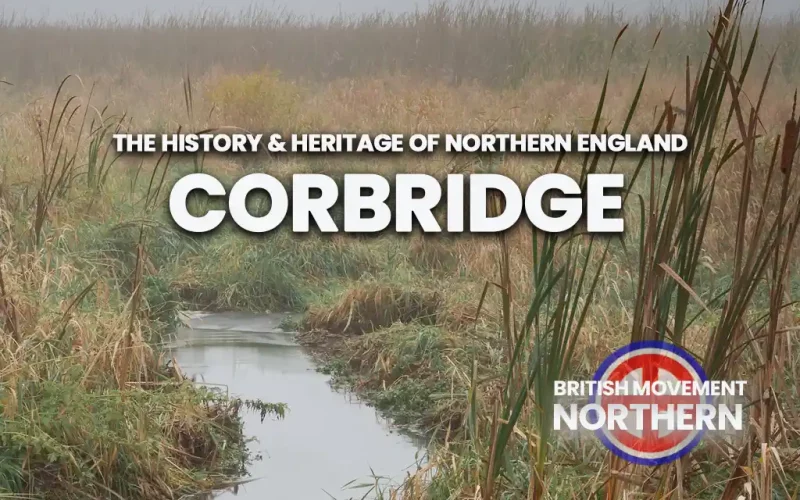Also known in the past as Corbridge on Tyne.
Earlier in this series on historic towns and cities of Northern England, we covered the neighbouring town of Hexham in Northumberland, and Corbridge shares much common history.
The Iron Age saw the area controlled by a Celtic tribe – as with much of what became Northern England, Corbridge sits within the territory of the Brigantes. Some historians believe that the name of the town came from the old Celtic word “corie”, which means a tribe or a host.
Corbridge really came into historical prominence during the Roman Occupation of Britain and held both national and regional importance. From 160 AD onwards, the Romans built up both a fortress and later a civilian town. Some historians believe that Corbridge served as a headquarters for one of the Roman legions stationed in the Province of Britannia.
The proximity to Hadrian’s Wall and its location on the north bank of the River Tyne were of vital importance to both the Roman military and the Roman governance of the province. The major Roman road, Dere Street, which provided the north-east route to Scotland, crossed the Tyne at Corbridge. Known to the Romans as Corstopitum, or Coriosepitum (some sources say Corielopocarium). The Romans finally abandoned Corbridge in 86AD.

After the end of the Roman period in northern Britain, local people used the old Roman buildings as a source of building materials. There was evidence that the first established church in Corbridge, the church dedicated to Saint Andrew, used old Roman stone as part of its foundations and tower. Some historians believe that the original church in Corbridge was founded by Saint Wihtred.
With the coming of the Anglo-Saxon peoples after the end of Roman occupation, the region was soon controlled by the Northern Angles and the settlement of Corbridge became part of the Kingdom of Bernicia. The northern Angles called the settlement Corebricg. The territory was ruled from the royal fortress at Bamburgh.
King Aethelfrith fought to unite Bernicia with the Kingdom of Deira and in 632, his son King Oswald was killed in battle and the resulting union of northern kingdoms created the Kingdom of Northumbria, ruled from York. Nevertheless, Corbridge remained an important seat of the Northumbrian earls throughout the 7th and 8th centuries, with the church in Corbridge classed as an ‘ordinary minster’.
The turmoil of the Anglo-Saxon period saw King Aethelred 1, King of Northumbria, betrayed and murdered on the outskirts of Corbridge in the year 796 AD. In the following two centuries, Northumbria was subjected to the invasion of the Danes and the entire northern part of England became part of the Danelaw.
As the Norse settlers in Ireland came under pressure from the Irish clans, some of these Hiberno-Norse shifted their attention to northern England. The Battle of Corbridge in 918, for many years historians believed that there were two battles fought at Corbridge, one in 914 and the second in 918, as the Hiberno-Norse king Ragnall fought to take control of Northumbria. Now the accepted view is that King Ragnall defeated an alliance of the Scottish King Constantine and of Ealdred, the ealdorman of Bernicia.
Following his victory at Corbridge, King Ragnall consolidated his hold on Northumbria and marched south to seize York, where he declared himself King of Northumbria. After the Norman invasion in 1066, the region of North-East England that eventually became known as Northumberland came under Norman control.
King John of England was fascinated by Corbridge and wrongly believed that the site of the church of St Andrew was built over a horde of buried Roman treasure. So in 1201 King John brought his court to Corbridge and conducted a search for treasure in the grounds of the church, digging through the foundations and ruins of earlier buildings. No treasure was found. However one positive outcome was that King John granted Corbridge a market charter in the same year 1201.
As with many parts of Northern England across the Middle Ages, Corbridge suffered from raids by Scottish war bands and larger armies of Scots. In 1138, King David I of Scotland occupied the town and claimed it as part of his extended territory. This did not last and English forces drove the Scots back into Scotland.
These incursions continued and in 1296, a Scottish army under William Wallace, captured Corbridge and looted the town before setting the town ablaze. This type of destruction was repeated in 1346, when an army led by King David II of Scotland captured Corbridge and once again burned the town before leaving.
In the English Civil War, the strategic position of Corbridge as a crossing point over the River Tyne became a factor and there was another Battle of Corbridge in 1644, in which a Scottish army supporting Parliament was defeated by a Royalist force under the command of Sir Marmaduke Longdale and a Colonel Fenwick.

In modern times, Corbridge has remained a market town but also an important tourist centre, particularly for visitors seeking out traditional Northumberland or visiting Hadrian’s Wall.
Corbridge is a White town; the most recent census data (2011) gives the population breakdown as White British and other White nationalities, which includes Irish and Eastern Europeans, as 98.7% White, a clear recommendation.
Resources
Top Image: Roger W Haworth, CC BY-SA 3.0, via Wikimedia Commons. The pant (water supply fountain) in Market Place, Corbridge, Northumberland
Lower Image: Moyn2000 at English Wikipedia, Public domain, via Wikimedia Commons
The British Movement welcomes articles for possible inclusion on this site from members and supporters across the North of England. Please remember that we have to operate within the laws of this country; we will not include any content that is against the current laws of the United Kingdom. News reports should be topical and be relevant to the regions covered by this website.












